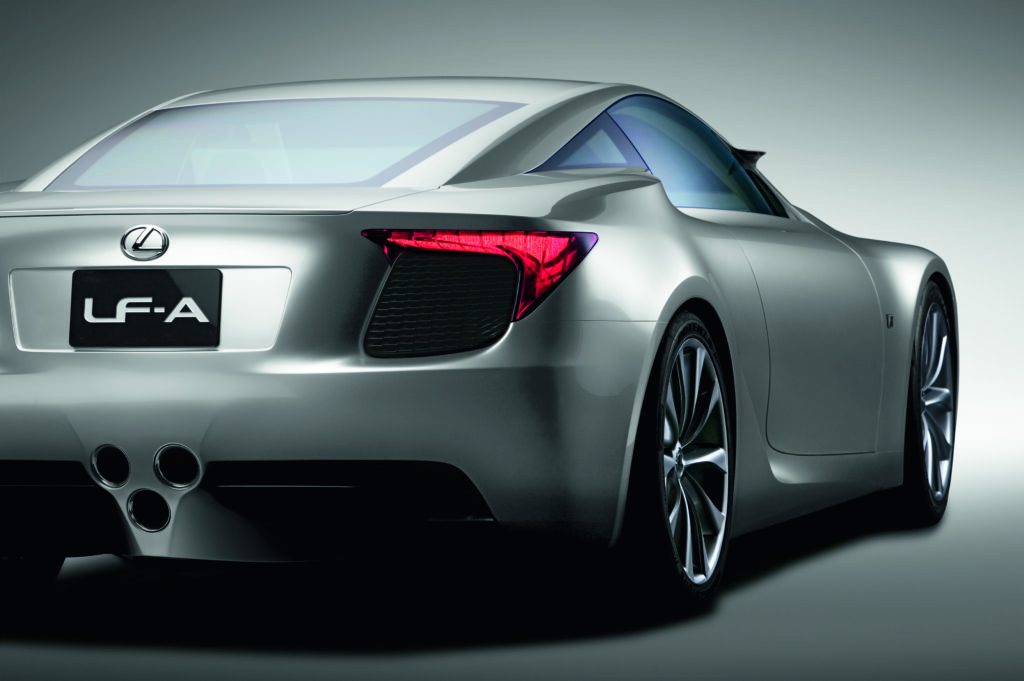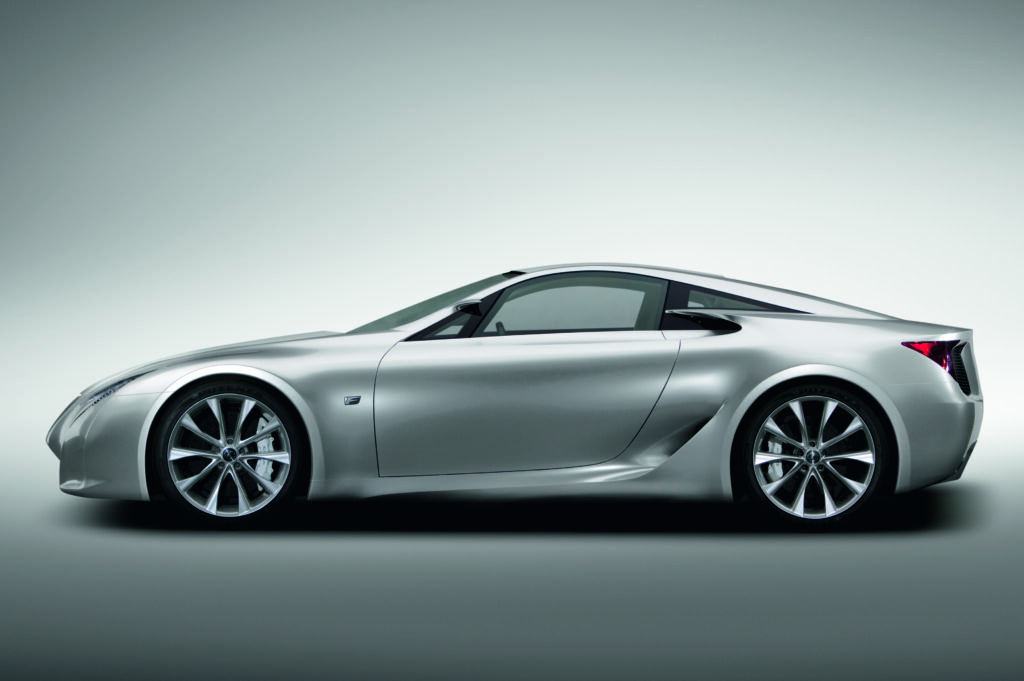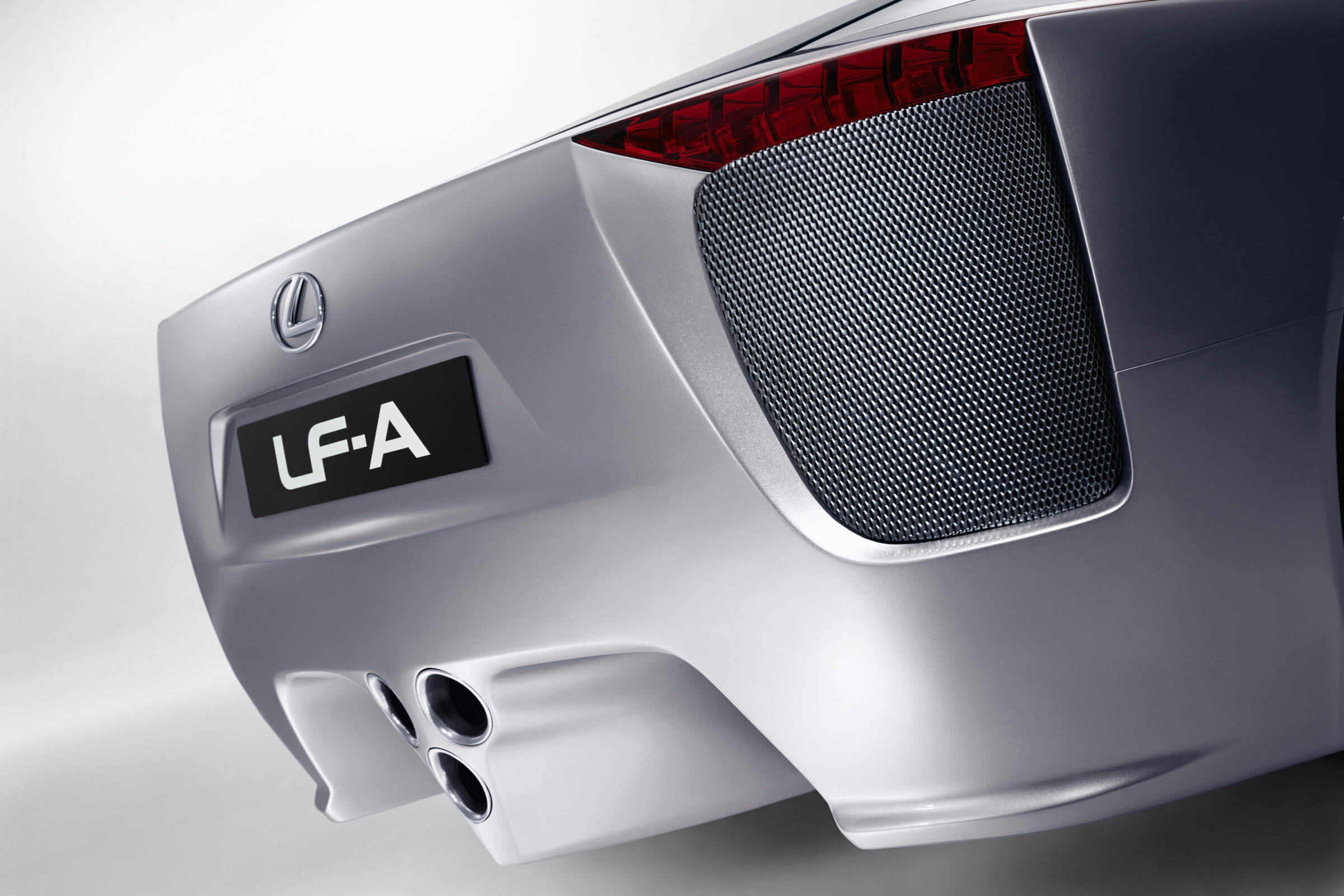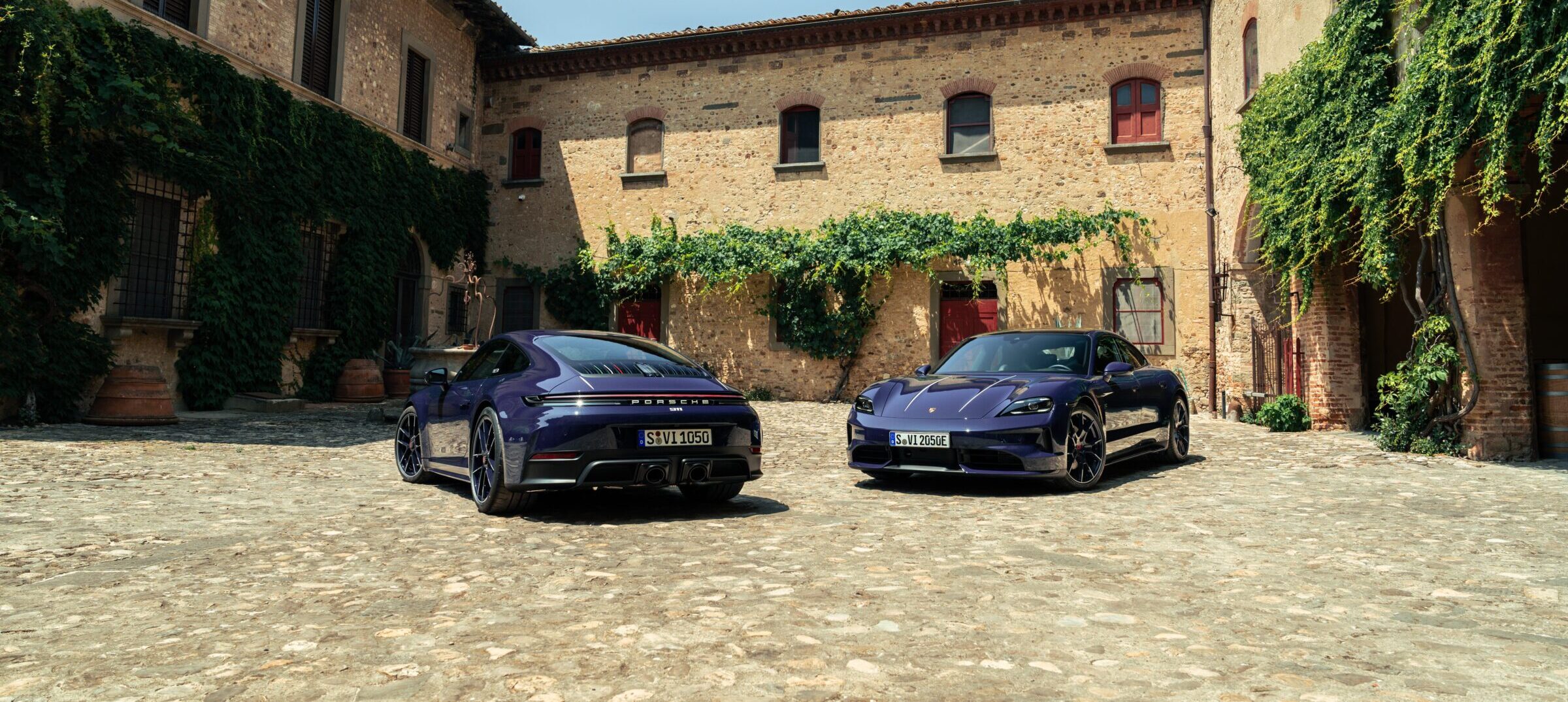It’s love at 9500 rpm – Lexus LFA
It accelerates relentlessly, on and on. Suddenly the display shows red – a quick press on the right rocker switch and it shifts up. As soon as the display changes to white, the 4.8-liter V10 engine is once again striving towards its top speed of 9,500 rpm. Even at 4,000 rpm, the engine sounds like it’s at the limit. From 6,000 rpm, you could be forgiven for thinking you were in the middle of an F1 Grand Prix in the early 2000s. And all this in a Japanese super sports car – a review of the Lexus LFA.
If you leaf through the history of Japanese super sports cars, it quickly becomes clear that apart from the Nissan R390 or the Toyota 2000GT, there was only one other name in this vehicle class. We are talking about the now legendary Lexus LFA. Incidentally, the Japanese car earned its legendary status back in 2011 after setting the Nordschleife record. After 7:14.64 minutes, racing driver Akira Lida crossed the start/finish straight again and was faster than the competition from Italy despite less power and a slower gearbox.
The LFA is now over 13 years old, but its history goes back even further. Development began back in 2000 under the direction of chief developer Haruhiko Tanahashi, who wanted to create a world-class sports car to take the Lexus brand to a new level.
Complete freedom for everyone involved

In contrast to other projects, the engineers of the LF-A, as the car was initially called internally, were given complete freedom of design. There were no specifications for materials, drive or process technologies. The team therefore initially drew up a list of 500 core features that they wanted for this sports car. As early as 2001, the decision was made to use a newly developed V10 engine as the power source. The first prototype rolled off the production line in 2003. In October 2004, an LF-A was used for the first time for test drives on the legendary Nürburgring Nordschleife. This made it clear to the public that a new super sports car was in the works. At the North American International Auto Show (NAIAS) in Detroit, a first concept car with a comparatively close-to-production design was finally presented. This study was then also shown by Lexus at other motor shows such as the IAA 2005.



A new discovery: carbon fiber
However, after successful performance tests on the test benches and in the prototypes with the 4.8-liter engine, the team discovered that there was another aspect that made them unhappy. So far, all the prototypes had light alloy bodies, but these did not meet expectations in terms of weight and torsional rigidity. While other manufacturers would probably have continued with the existing material, Lexus gave the engineers the freedom to explore new avenues. After about five years of development, the team decided to make a fundamental redesign. The entire body and key parts of the chassis were made entirely from carbon fiber, which was new territory for everyone involved, including Lexus as a car manufacturer. Nevertheless, the decision was made to bring carbon production in-house rather than outsource it. The Toyota Group’s experience in the production of woven structures was invaluable.
Strictly limited to 500 pieces
To test the LF-A under extreme conditions, Lexus decided to enter camouflaged prototypes in the 24-hour race and in the VLN at the Nürburgring in 2008 and 2009. In the second year, even the top boss Toyoda-san personally took part at the wheel to show his appreciation for the project. Lexus presented the production LFA for the first time at the Tokyo Motor Show in October 2009. Production then began in early 2010 with a maximum of 20 vehicles per month and a total production of just 500 units. Customers could choose from 30 paint colors, 12 upholstery colors and six colors for the brake calipers. The base price in Germany was €375,000. Towards the end of the production period, the Japanese manufacturer launched a Nürburgring Edition with improved downforce and spoilers, of which 50 were produced. Special design features included ventilation slits in front of the hood, edges on the fenders, aerodynamic mirrors and triangular exhaust tailpipes, which produced an impressive sound.


The list of highlights of the Lexus LFA is extensive and cannot be exhaustive. In addition to the low kerb weight of 1,480 kilograms and the comfortable, luxurious interior, the engine is undoubtedly the focal point. From a displacement of 4.8 liters with a rev range of up to 9,000 rpm, Lexus drew an impressive 412 kW/560 hp and a maximum torque of 480 Newton meters. In the Nürburgring Edition, the output was increased to 419 kW/570 hp. A sequential six-speed gearbox with shift paddles on the steering wheel provided the power transmission. The LFA reaches a speed of 100 km/h in just 3.7 seconds and has a top speed of 325 km/h. The ten-cylinder engine with a cylinder bank angle of 72 degrees is so rev-happy that the development team opted for a digital rev counter. An analog display would not have been able to cope with the speed of the speed changes. This decision also opened up the possibility of designing a fully digital cockpit. A metal ring on the display serves as a rev counter that moves back and forth depending on the selected driving mode.
“… an analog display would not have been able to cope with the speed of the speed changes.”
Unfortunately, two relatively advanced versions of the Lexus LFA never made it beyond prototype status. In fact, there are at least two near-production vehicles of the LFA Roadster. Real considerations for a small series were therefore derived from the 2008 concept car. The reasons why this never reached dealers and customers are not known. However, it can be assumed that one of the reasons was that sales of the coupé were not without problems. The relatively high price compared to similarly powerful competitors meant that demand was low. Another project was a thoroughbred racing version of the LFA for the FIA GT1 series. The aim was to earn additional money and recoup development costs by selling the racing cars. However, when the car was ready in mid-2012, the organizers of the GT1 racing series announced that it would be discontinued at the end of the year. At the 24 Hours of Le Mans, the GT1 category had already been discontinued a year earlier.
Lexus LFAs are currently being traded on the used car market for between 1 and 1.8 million euros, whereby the supply is already very low given the number of units.




Photos by Alex Penfold for Lexus & Lexus Press





